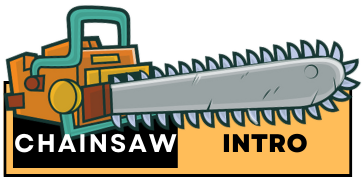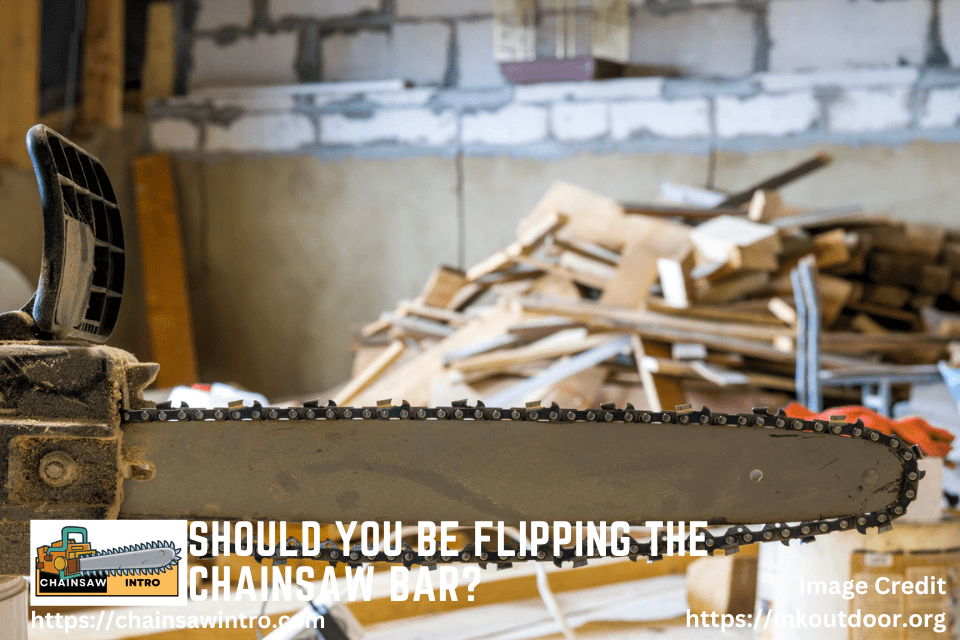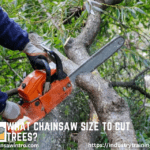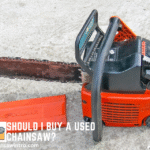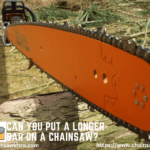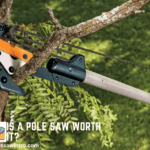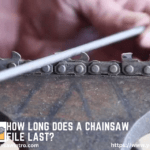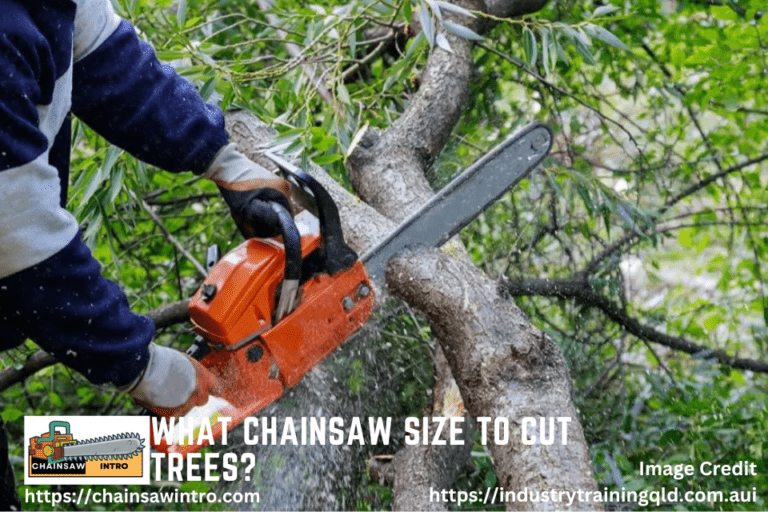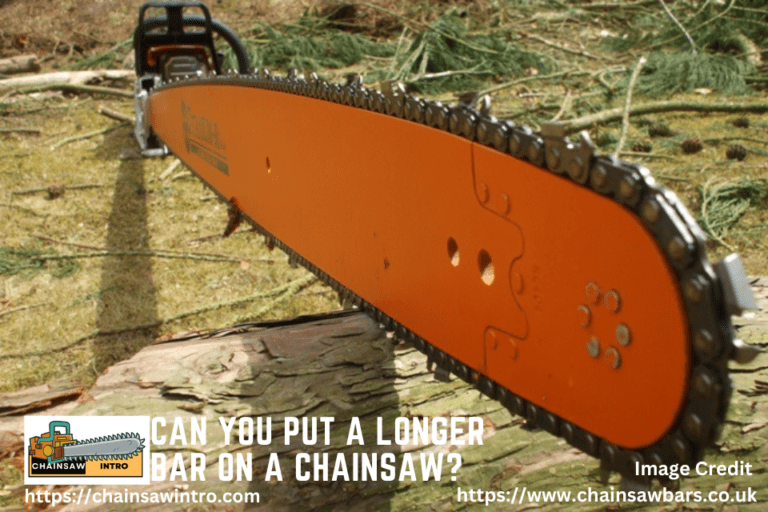If you’ve owned a chainsaw for a while, you may have heard advice about flipping the chainsaw bar. Many new users wonder if this is truly necessary or just another maintenance tip that doesn’t make much difference. The truth is, flipping your chainsaw bar regularly can significantly extend its lifespan, improve cutting performance, and reduce wear and tear on your chainsaw.
In this article, we’ll explore why flipping the chainsaw bar matters, how often you should do it, the benefits, and what happens if you don’t.
What Does Flipping a Chainsaw Bar Mean?
Flipping a chainsaw bar means removing the bar and reinstalling it upside down (rotated 180 degrees). Since chainsaw bars are symmetrical, they can function in either position. By flipping it, you allow both sides of the bar to wear more evenly, preventing premature damage and improving cutting performance.
This is a simple yet often overlooked part of chainsaw maintenance that can make a big difference in how long your bar lasts.
Why Should You Flip the Chainsaw Bar?
Chainsaw bars endure significant pressure and friction during use. Over time, the side that faces downward when cutting takes on the most wear. If left unbalanced, the bar may:
- Develop uneven rails, making the chain cut crookedly.
- Cause the chain to slip out of alignment, increasing the risk of kickback.
- Shorten the overall lifespan of the bar, forcing an earlier replacement.
By flipping the bar, you balance out the stress and wear across both sides. This results in longer bar life, smoother cutting, and safer operation.
How Often Should You Flip a Chainsaw Bar?
The ideal frequency for flipping depends on your usage intensity and habits. For avid users sharpening after every tank of gas, flipping every second or third sharpening is common, aligning with professional logger practices. If you’re processing 3-5 cords of firewood per season, a once-a-season flip might suffice, while daily cutters could benefit from weekly or monthly rotations.
Arborists and forum contributors often tie flipping to routine tasks: do it every time you sharpen the chain, clean the saw, or notice uneven wear like burrs on one rail. A practical tip is to mark the bar with a lumber crayon (e.g., “flip next time”) or keep a logbook to track intervals, preventing forgetfulness. Ultimately, monitor your bar’s condition—flip when the bottom rail shows more wear than the top, or as a preventive measure during off-season servicing.
There’s no strict rule, but most chainsaw experts recommend flipping the bar:
- Every time you sharpen or replace the chain.
- After 10–20 hours of use, depending on workload.
- Whenever you notice uneven wear on the rails or edges.
The key is consistency. Flipping the bar regularly prevents one side from becoming overly worn before the other side has a chance to even out.

Benefits of Flipping the Chainsaw Bar
Regularly flipping your chainsaw bar offers several important benefits:
1. Extends Bar Life
A chainsaw bar is not cheap. By flipping it regularly, you prevent deep grooves and rail damage, which can double the lifespan of the bar.
2. Improves Cutting Accuracy
An uneven bar causes the chainsaw to cut at an angle, making it difficult to cut straight lines. Flipping the bar ensures consistent rail wear, keeping cuts straight and precise.
3. Reduces Chain Wear
A bar that wears unevenly puts extra strain on the chain. This leads to faster dulling, more frequent sharpening, and increased replacement costs.
4. Prevents Kickback and Safety Issues
A misaligned chain on a worn bar is more likely to slip or cause kickback. Flipping the bar helps keep the chain aligned, reducing the risk of accidents.
5. Saves Money in the Long Run
By extending the life of both the bar and the chain, flipping saves you money on replacements and repairs.
Signs That Your Chainsaw Bar Needs Flipping
Not sure if it’s time to flip your chainsaw bar? Look for these signs:
- Crooked cuts – If your chainsaw isn’t cutting straight, the bar may be uneven.
- Visible wear on one side – Deep grooves or sharp edges indicate uneven rail wear.
- Chain slipping or tightening frequently – This often happens when the bar rails are worn down on one side.
- Burn marks or extra friction – Excessive heat buildup on one side of the bar suggests imbalance.
If you notice these issues, it’s time to flip your bar—or possibly replace it if the damage is severe.
What Happens If You Don’t Flip the Chainsaw Bar?
Ignoring bar flipping can lead to several problems:
- The bar will wear out faster, forcing you to buy a replacement sooner.
- Your chain will dull quicker, adding more sharpening work.
- The saw may cut unevenly, requiring more effort and reducing efficiency.
- Safety risks, including kickback and chain derailment, will increase.
Ultimately, skipping this simple maintenance step costs more in the long run—both in time and money.
Conclusion | Is Flipping Right for Your Chainsaw Routine?
Yes, you absolutely should. Flipping the chainsaw bar is a simple, quick, and cost-effective maintenance practice that extends the life of your chainsaw, improves cutting accuracy, and reduces safety risks.
For homeowners, DIYers, and professionals alike, making bar flipping part of your routine maintenance can save money and frustration in the long run.
Remember: a few seconds of extra effort during maintenance can mean years of better chainsaw performance.
Frequently Asked Questions
How often should I flip my chainsaw bar?
Most experts recommend flipping your bar every time you sharpen or replace the chain, or after 10–20 hours of use. This helps ensure even wear on both sides.
What happens if I never flip my chainsaw bar?
If you don’t flip your bar, one side will wear out faster, causing crooked cuts, chain misalignment, and safety risks like kickback. It also shortens the bar’s lifespan.
Do all chainsaw bars need to be flipped?
Yes, nearly all modern chainsaw bars are symmetrical and designed to be flipped. However, check your chainsaw manual to confirm compatibility.
How do I know if my chainsaw bar needs flipping?
Signs include crooked cuts, deep grooves on one side, frequent chain tightening, and visible wear on the bar rails.
Does flipping the bar really make a difference?
Absolutely. Flipping the bar helps extend bar life, improve cutting accuracy, and reduce chain wear, saving you money in the long run.
Should I replace the chainsaw bar instead of flipping it?
If your bar shows excessive wear, cracks, or a damaged sprocket, replacement is the safer choice. Otherwise, flipping can extend its life considerably.
I’ve spent the past 10+ years working with chainsaws in forestry, landscaping, and firewood preparation. Along the way, I’ve gained certifications in chainsaw operation and safety and built extensive experience with trusted brands like Stihl, Husqvarna, and Oregon. I enjoy sharing my knowledge through step-by-step guides, tool reviews, and safety advice so others can get the most from their chainsaws while staying safe on every job.
